by Alessandra Ressa
Invisible to both residents and visitors, under via Rossetti, covering several blocks from via dell’Eremo to via Mameli all the way to via dei Porta and further downhill towards via Piccardi, there stands, in complete silence and perpetual darkness, a maze of cement tunnels, in two and three vertical levels, connected by narrow, spiral staircases.
These are the German military bunkers and air raid shelters of villa Modiano, an impenetrable defensive system connecting and protecting the SS officers who lived in via Rossetti’s confiscated villas during World War II.

Villa Modiano, belonging to the well-known card and advertising poster makers, the Modiano family, was secludedly located along via dell’Eremo, a few hundred meters from via Rossetti, and surrounded by a vast park. For decades the wealthy and influential family lived in that exclusive location while successfully managing the Modiano factories, outlets, and laboratories located all over Trieste. There was also a large warehouse in via dei Porta, just two blocks away.
Nowhere was the villa visible from the street, and passersby often stopped at the metal gate of via Rossetti, the main entrance to the residence, and tried to imagine the fabulous mansion hidden by the immense park. Inside the property, several smaller villas and more modest lodgings housed the company’s employees and servants.
After September 8 1943, with the establishment of the Operational Zone of the Adriatic Littoral, Trieste born SS Lieutenant General Odilo Globocnik, whose direct commander was none less than Heinrich Himmler, confiscated several villas in the area of via Rossetti. Some of them had belonged to rich Jewish families who had managed to escape or had been deported. Globocnik, one of the most feared Nazi leaders in Eastern Europe, had been posted to his hometown Trieste, where he proceeded to install his men in via Rossetti’s seized mansions. Villa Modiano became the residence of Reich Defense Commissioner Friedrich Rainer.

The Nazis proceeded to demolish several of the buildings inside the Modiano park and the underground bunkers and tunnels connecting them to the pre-existing nearby air raid shelters, and to build more, both for military and civilian use (these were strictly separated). It was an impressive defense block. Once Germany capitulated and the Allied troops settled in Trieste, villa Modiano was chosen as a residence for British officers, together with other prestigious mansions in the neighborhood.
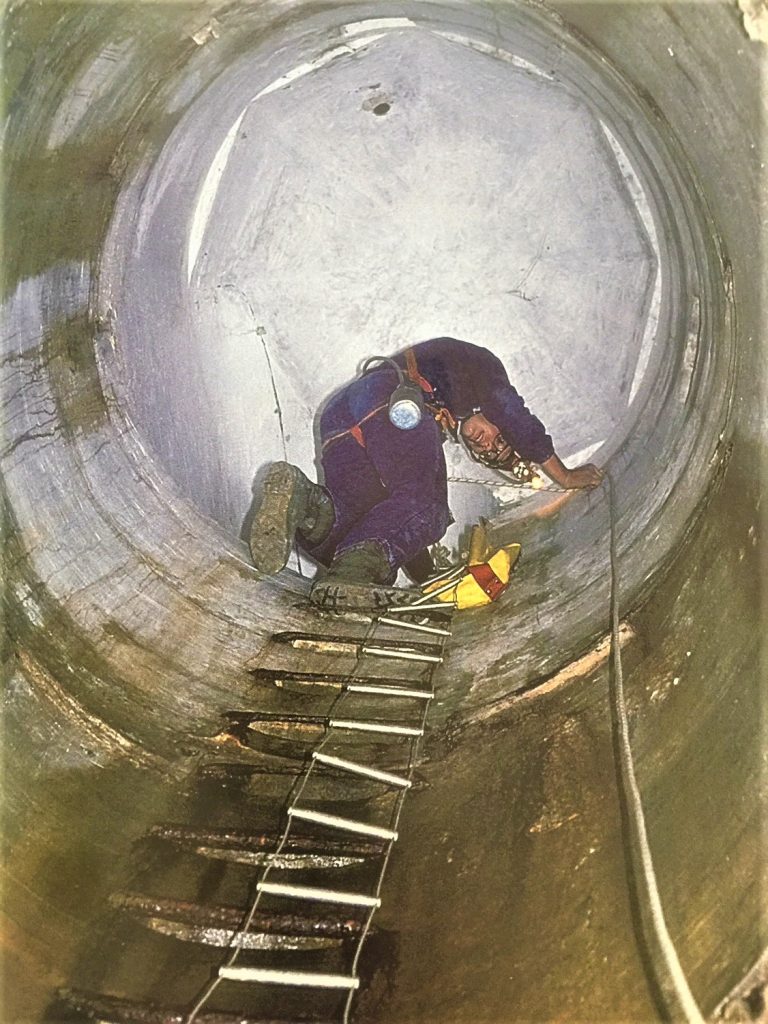
After the war, the Modianos moved back to the property, where their descendants still live today. In the early 1980s, a portion of the park with its military installations was sold to private building contractors. The area was prime property and many historical buildings, mostly villas and their parks, had already been sold, to be demolished and replaced by apartment buildings.
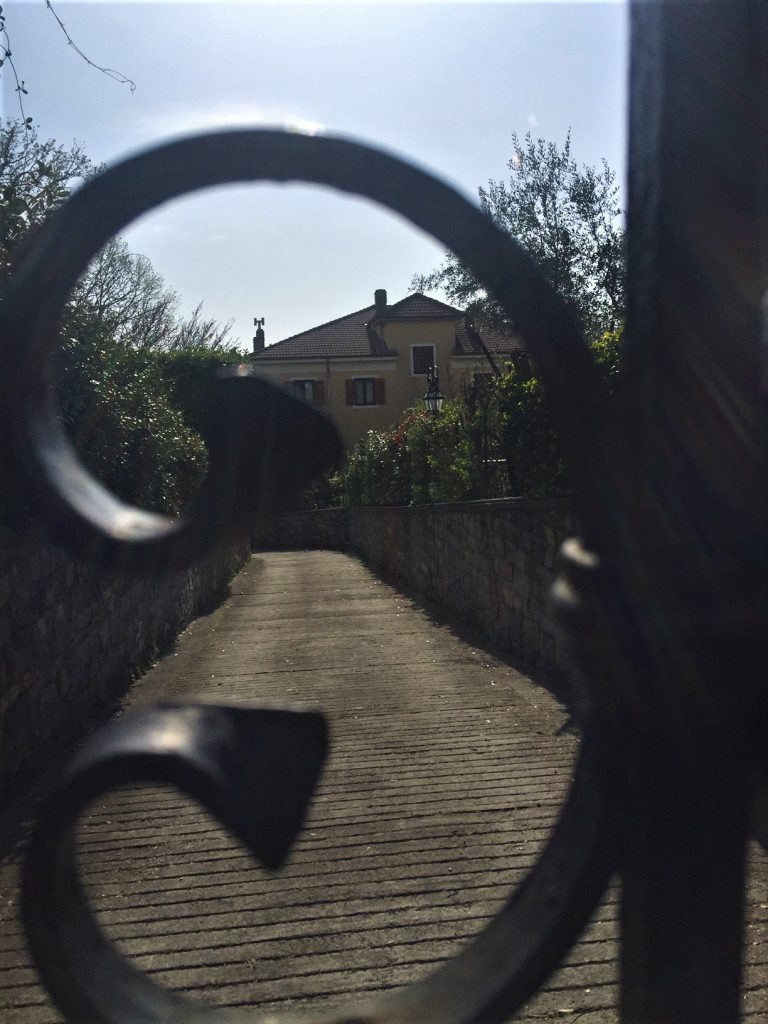
At that point, a large part of the Modiano park had already been used to build Liceo Petrarca and other high schools in via Mameli from the mid-1950s to 1970s. Despite the uniqueness of the site, nobody considered it worthy of any particular historical value. The municipal offices quickly handed over the construction permits, and most surfacing military reminders of Nazi occupation were levelled down.
Before realtors began construction of the apartment buildings, speleologists of S.A.S. were able to inspect the tunnels and create detailed maps, so that the site would not be lost forever. A later inspection in 1987 found strong opposition from the apartments’ residents, concerned with insurance coverage in case of accidents, to the point that Carabinieri had to be called in and the inspection was cancelled halfway through.
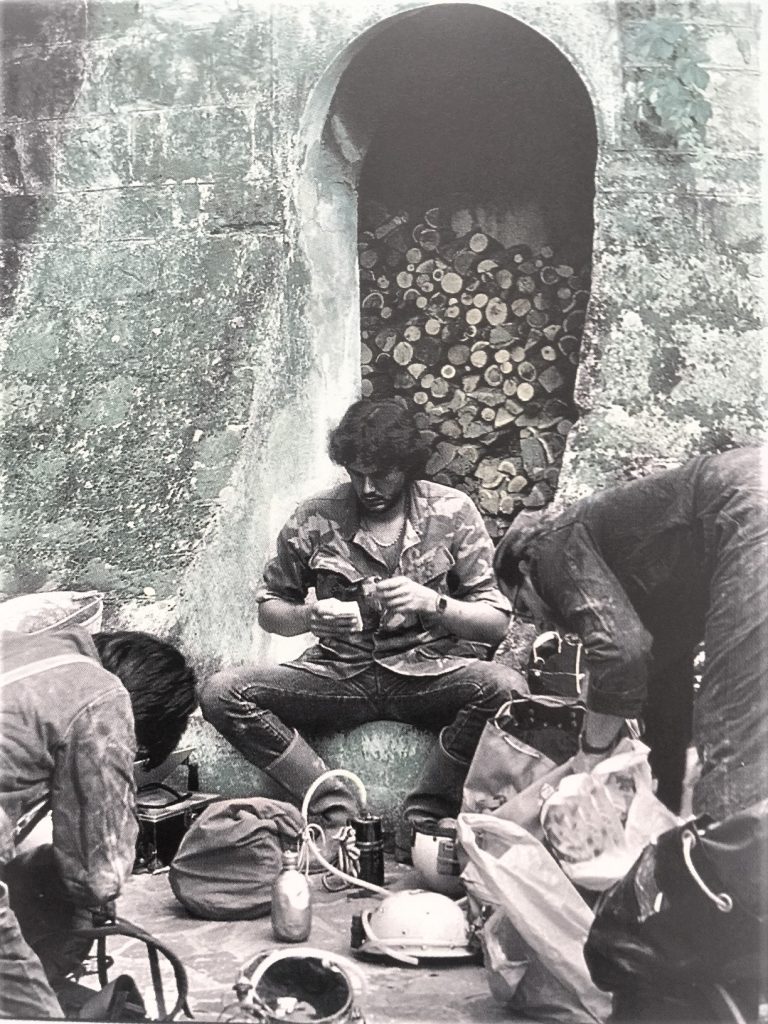
Today, the entrances to the German bunkers, as well as to the air raid shelters, are still visible in via dell’Eremo and via Rossetti. Inside the private property of via dell’Eremo 9, the luxury apartment buildings accessible from a driveway in via Rossetti stand over the military complex. One of the entrances to the bunker is used by residents as a wood storage.
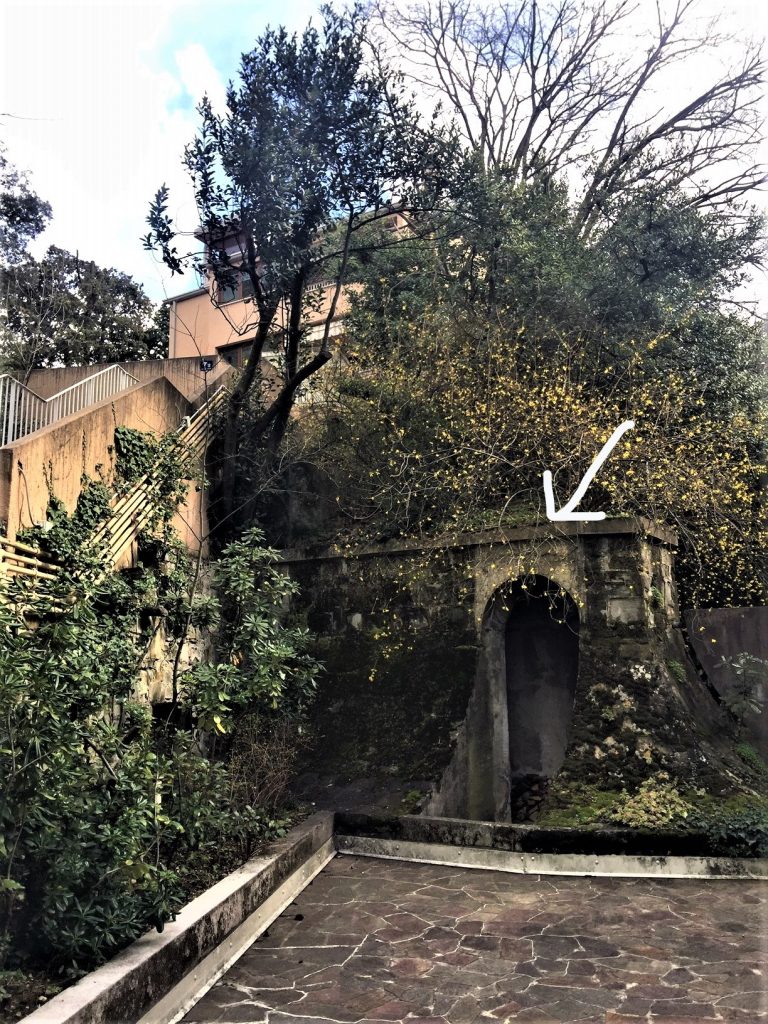
Inside, all appears to have remained untouched. The original fortified iron door is still there. It has been locked to prevent access, but looking through the peephole with the help of a flashlight another portion of the tunnel appears, with a cement spiral staircase leading into the darkness below.
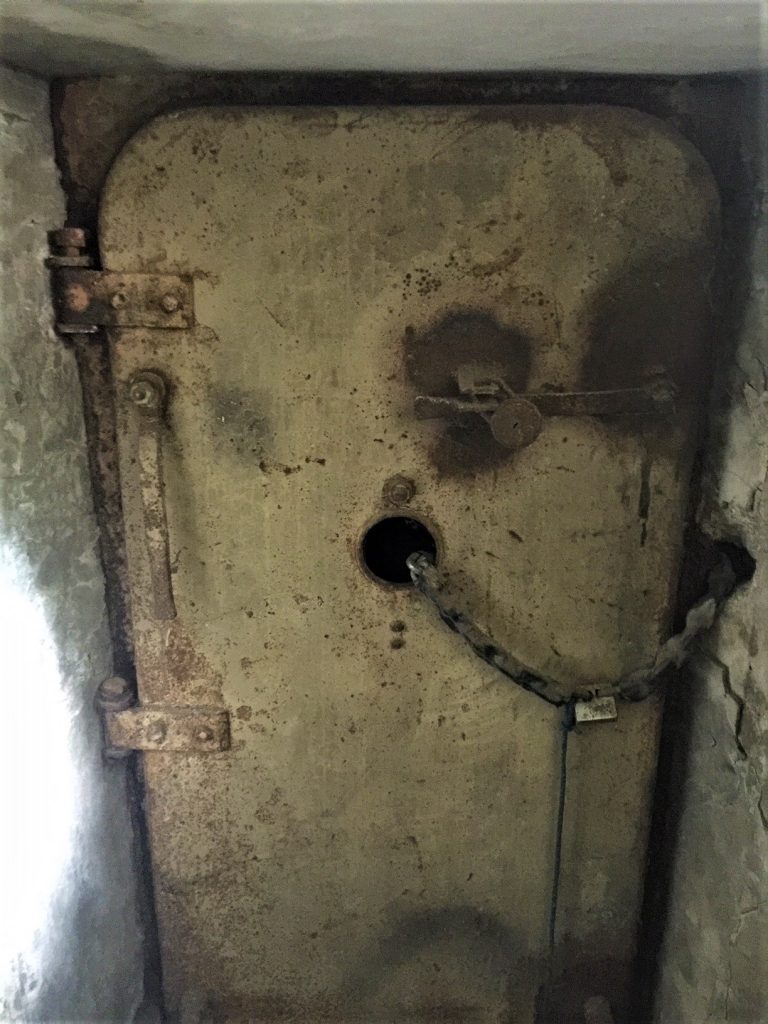
According to speleologists of S.A.S. Armando and Enrico Halupca and Paolo Guglia, who published their findings in the book “Trieste sotterranea,” the military complex has three entrances, one in via dell’Eremo and two more vertical pits further uphill. A maze of tunnels connects them all. The main underground tunnel is 3 meters wide and 4 meters high, and has two more independent entrances.
Before the tunnels were permanently enclosed in the residential area, it was observed during inspection that one of the entrances had dozens of bullet holes on the walls. For some, this was a sign that a harsh battle had been fought between German soldiers and partisans before the stronghold was finally conquered.

In the lower complex of modern red brick apartment buildings of the same block along via Rossetti, another surprise awaits. Going down an anonymous set of stairs to the property underground parking, behind a locked gate is one of the entrances to the air raid shelters used by Trieste civilians. The cool and mysterious air blowing out of this long forgotten tunnel tells of many decades of solitude and neglect.

Back on sunny via Rossetti is the second entrance to the shelter, immediately next to Liceo Petrarca behind a locked metal gate. If you squeeze your eyes and peek through the gate you will clearly see it. The shelters were part of a vast complex of such tunnels running under Trieste for miles. When the sirens went off all over town, Triestini rushed to the nearest one and hid for hours waiting for the all clear. The only one of such sites that is accessible today is the complex of shelters known as “Kleine Berlin” in via Fabio Severo.
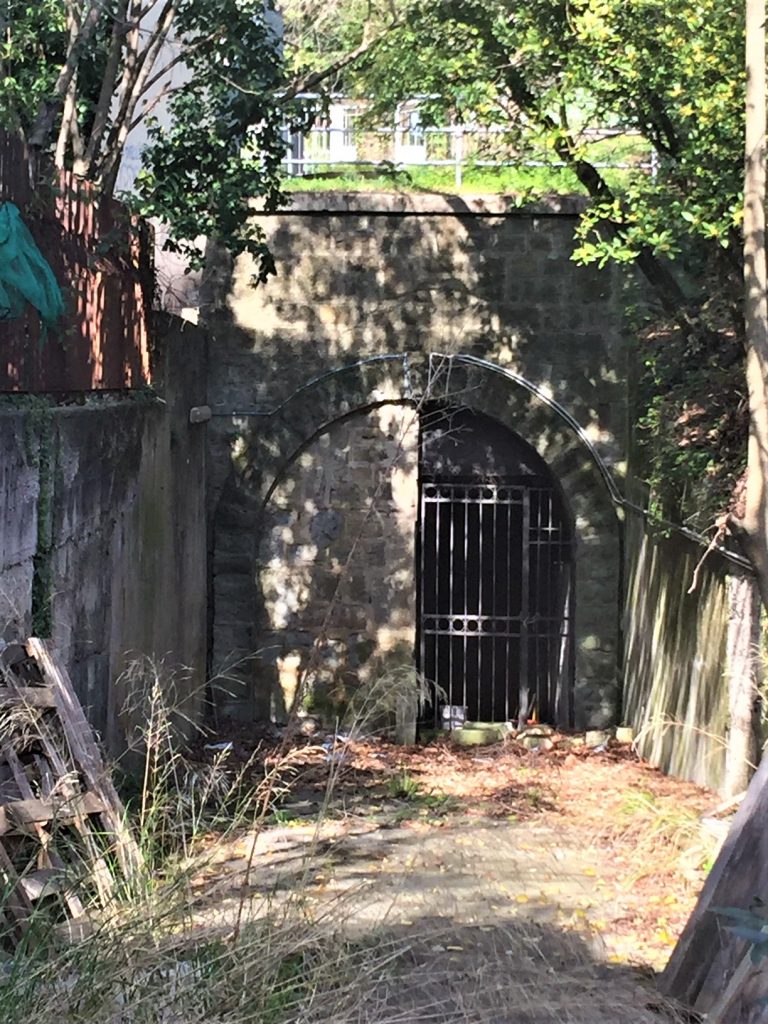

























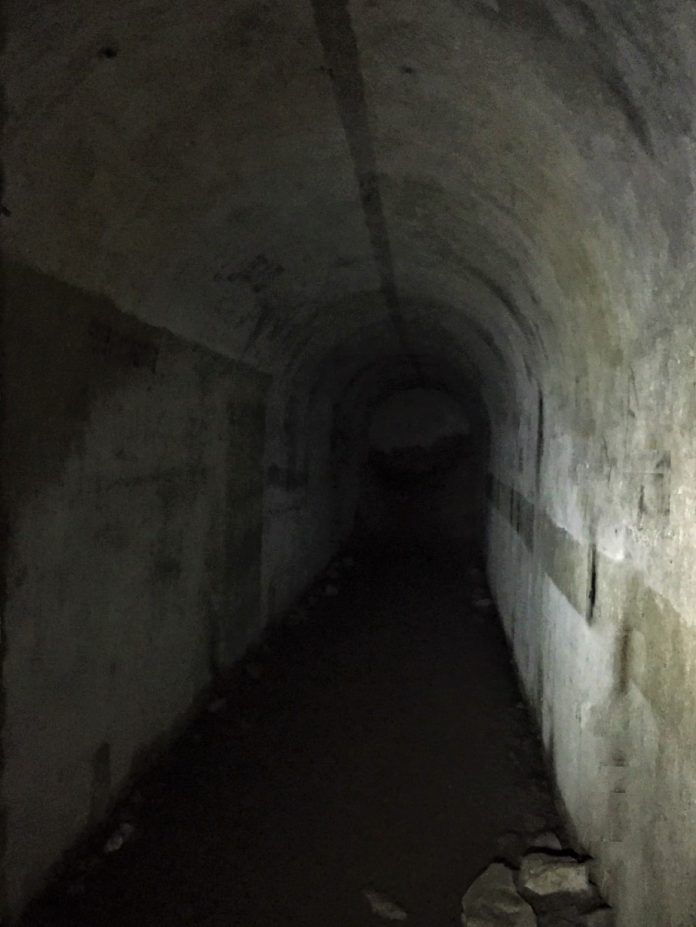




We enjoy your articles immensely. I am a semi retired American lawyer and my wife is an artist born in Serbia who came to Trieste as a child to buy.
My wife Ksenija Maric led us here and we have purchased two apartments in Villa Ada. We would like to meet you and invite you for coffee to Villa Ada. So please let us know if you would meet us.
Excellent and informative article. History should never be forgotten.
I have only been to Trieste once but will forever carry its memory with me.
Thank you.
I am looking for the family of Giorgio Russini from Via dell Eremo, No.1. My Uncle was posted to Trieste during the last part of WWII and I have his papers and photos. There was letters, photos (unmarked) and a personal card from Giorgio. My Uncle died in 1970s and would never speak to his time during the war – I would love to connect with someone from the Russini family.